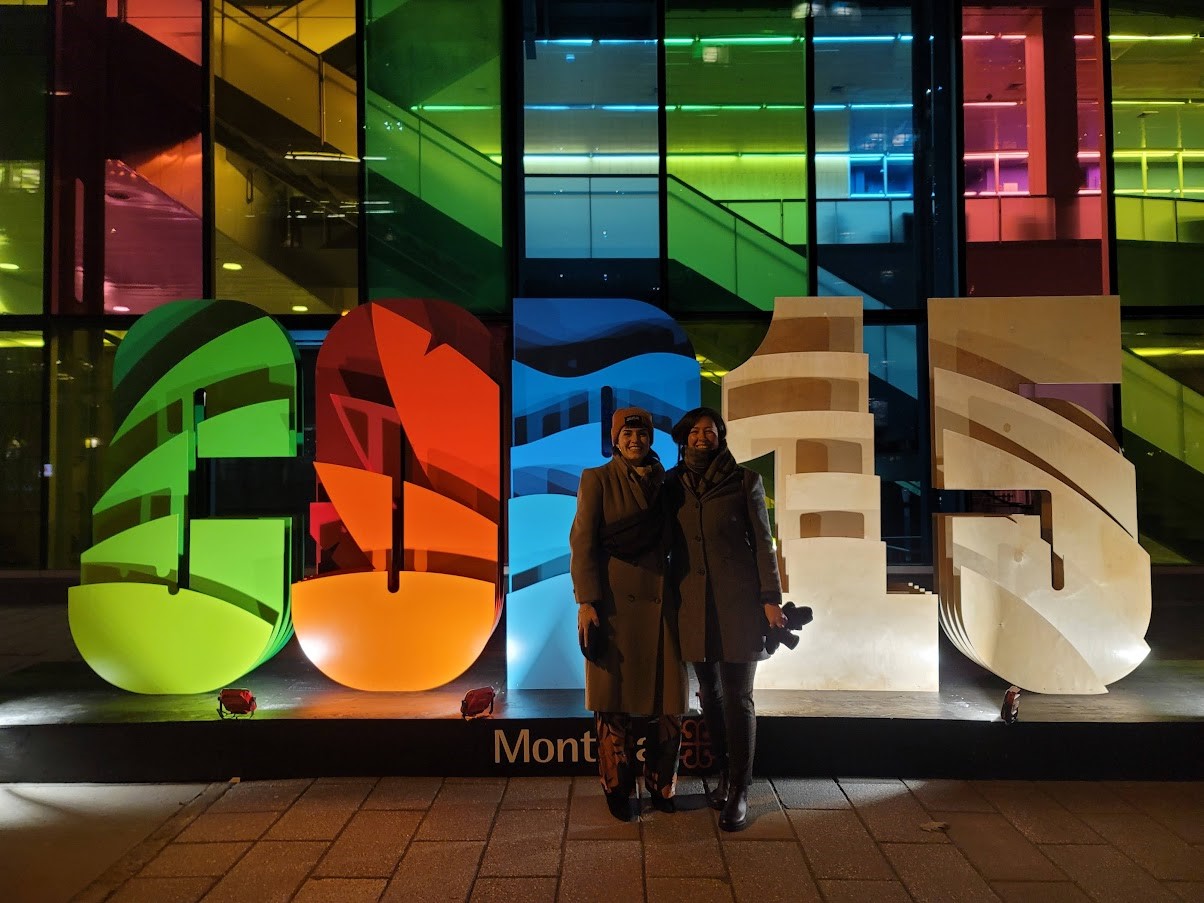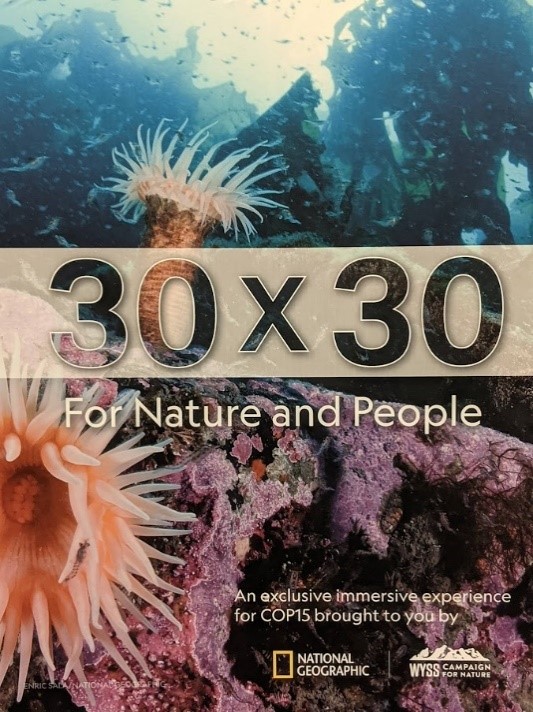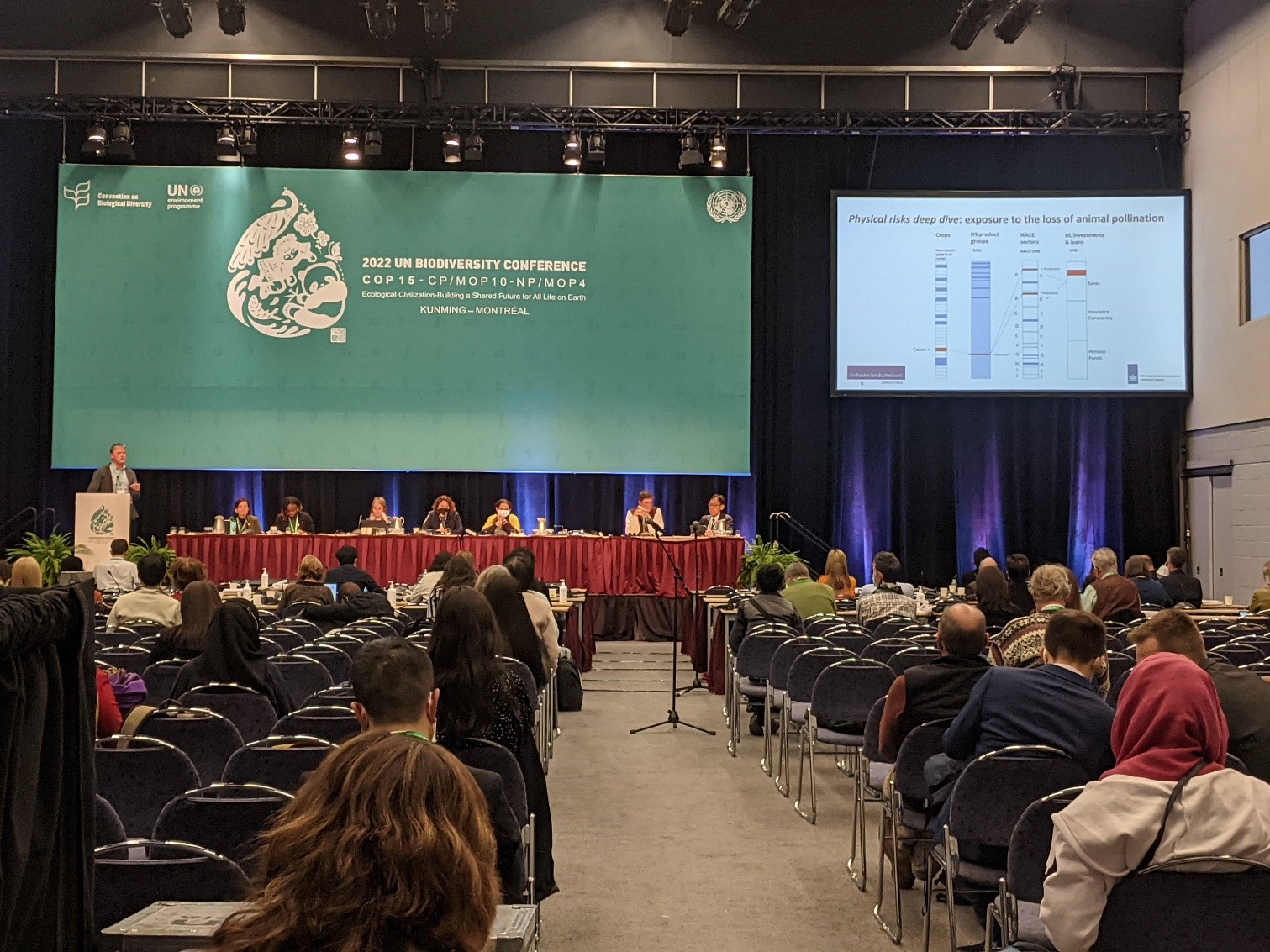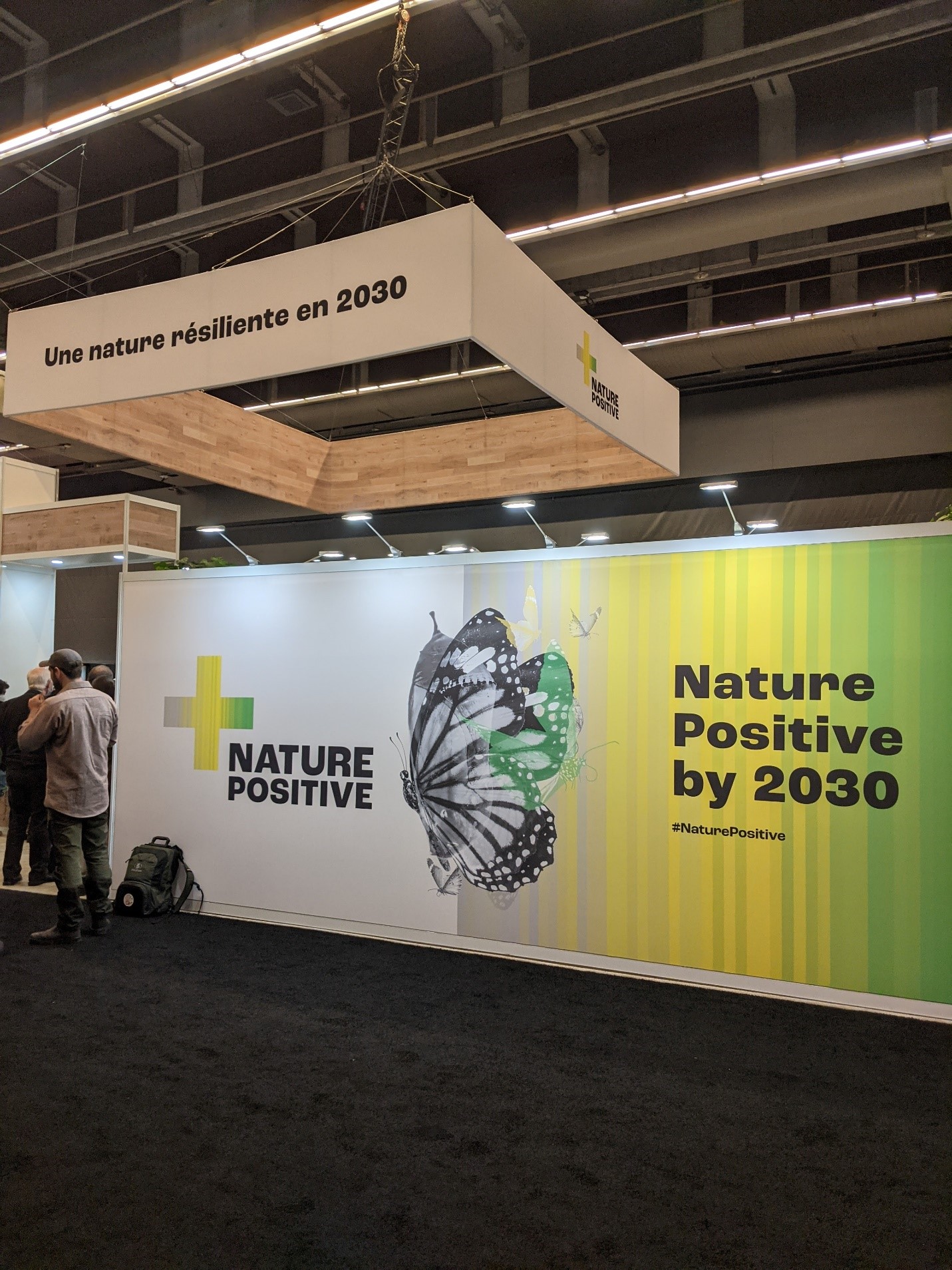
A Golden Opportunity
By Jess Grant - Adirondack Council Conservation Associate
Wednesday, June 14, 2023
Last summer, it was announced that the Conference of the Parties on biodiversity (COP15) would not be hosted in Kunming, China as originally planned and would instead be hosted in Montreal, Canada due to COVID-19. The close proximity of COP15 to the Adirondacks enabled Jackie Bowen, Director of Conservation, and myself to engage and amplify the importance of the bordering Adirondack Park (a part of the UNESCO recognized Champlain-Adirondack Biosphere Reserve) within this global context.

It was an absolute whirlwind. The Palais des Congrès de Montréal served as the venue for the event and it felt like the conservation version of ComicCon; thousands of people milled about in massive rooms for tabling and displays, in nooks for impromptu meetings, in immense auditoriums for panel discussions and discourse, in dazzling immersive displays for the Van Gogh Experience and participants crashed in cushy lounges accented with plants when they inevitably needed a break. Nearly 200 countries met over the course of two weeks, eventually agreeing upon a Global Biodiversity Framework (GBF). The GBF is supported by four goals with 23 targets to preserve biodiversity, use resources sustainably, and share the benefits of genetic diversity on a global scale. The four goals are to:
- Protect and restore ecosystems and threatened species by 2050, safeguarding genetic diversity
- Utilize resources sustainably
- Ensure that benefits are shared with Indigenous partners
- Secure finances, technical assistance, and technology to accomplish the Framework targets and goals
One of the 23 targets up for discussion was 30x30, which has become shorthand for thirty percent of land protected by the year 2030, a conservation goal that has drawn a series of actions on regional, national and international stages as climate change alters our environment. In May of 2021, the U.S. adopted the America the Beautiful initiative to conserve 30% of U.S. lands and waters by 2030. Along with the 22 other targets, 30x30 was adopted on December 19, 2022 in Montreal by the COP15 body, and Senate Bill S.6191A was adopted by New York state just four days later. New York’s adoption of 30x30 legislation requires the Department of Environmental Conservation and Office of Parks, Recreation and Historic Preservation to develop strategies and methodologies to achieve this goal.
 Why Additional Land Protection?
Why Additional Land Protection?
Some may question whether more land should be protected (or, arguably, better protected), so let’s get into that. Land protection remains one of the most powerful tools in boosting climate change resiliency and preserving biodiversity. Why? Because protecting tracts of forested land will allow for the maturation of trees to sequester more carbon in their biomass and, more importantly, in forest soils, home to billions of micro-organisms and species of mycorrhizal fungi. It also allows flora and fauna to adapt, and, when applicable, to migrate in response to changing climate conditions.
And because 30x30 seeks to protect both land and water, that means a plethora of habitats such as oak-pine forest, coastal grassland, and emergent wetland can be covered. Now, you may be picturing Ocean Spray employees in galoshes when you think of wetlands, but wetlands come in all sorts of flavors— about 50 in New York to be exact. These sensitive ecosystems create habitat for a wide swath of grasses, mosses, ferns, flowers, reeds, deciduous and coniferous trees, and even carnivorous plants like the pitcher plant. Vernal pools are another type of wetland, though they are seasonal, creating critical breeding grounds for amphibians, however, they are often at risk on properties that are developed since they are only present in spring or fall. As such, 30x30 is uniquely poised to protect these types of wetlands and many other habitat types in one fell swoop.
Biodiversity naturally falls in line behind protection of land because that means foraging, nesting, breeding habitats and migratory corridors will be able to protect the species that reside or pass through those spaces. While intrinsically important, biodiversity is a critical component to the health and survival of humans since we depend on plants, fungi, invertebrates, insects, birds, fish, and mammals for medicine, pollination of three quarters of our crops, food, fiber, and more. The proof is in the pudding— the more biodiversity we can safeguard, the more resilient our natural and human communities can be to droughts, pests, and diseases that are imminent in future years.
 How Does This Shake Out?
How Does This Shake Out?
On the global side of things, according to the COP15 discussions, 17% and 10% of earth’s land and oceans, respectively, are currently protected for “conservation and management.” Therefore, protecting 13% of land and inland waters and 20% of the earth’s oceans are set in our sights. That seems like a lot, but our future depends on it.
A very, very quick side-note. You’ll notice that the second word in the COP15 phrasing for 30x30 is management. Caution is advised when this word crops up in contemporary settings because it is often the word exploit cosplaying as a term that is far more palatable. While human wants are apparent, our needs can be met while prioritizing the vitality of ecosystems. In the words of Jackie, management should be “nature-mimicking” and cannot mean the demolition of the natural world for the purposes of anthropocentrism. We are not separate from nature— what we do to nature will come back to us, negative or positive.
 Like a Climate 401K
Like a Climate 401K
Thankfully, there is more and more positive, especially here in the State of New York where we can boast some of the most aggressive climate goals and bills. The 30x30 legislation in New York is very important for open space protection funding. We have 11% of New York lands and waters more to go to meet this goal by 2030, some of which will be accomplished through state land acquisition and some of which will be through conservation easements. It’s kind of like a climate 401K account where we know we’re going to get a large payoff from these investments in protections in the decades and centuries to come.
However, 2030 is only seven years away, a very tight timeline, and if New York does not make its deadline, the 30x30 NY law will expire and be repealed by January 1, 2031, so we will have to act quickly on this opportunity. Luckily for us, it is tightly correlated to the Climate Leadership and Community Protection Act (CLCPA) and its subsequent roadmap, the scoping plan, so there can be a healthy dose of optimism for protecting 30% of New York lands and waters by 2030.
Even better news, $38.9 million was earmarked for open space protection in the New York state budget that passed earlier at the end of April, and will be bolstered by $650 million of $4.2 billion bond act passed in November. Dovetailing these celebrations, Governor Hochul is currently embarking on a listening tour for how the bond act dollars should be spent. We can only hope that the initial investment on the remaining 11% of our goal is about to be made. This is a truly opportune moment to advocate for the protection of priority conservation areas, wildlife corridors, forests and wetlands within the Adirondacks, a place— we can agree with UNESCO on— that is pretty unique.
Looking for more ways to get involved with the Council?
Take Action! Connect With Us! Support Our Work!




